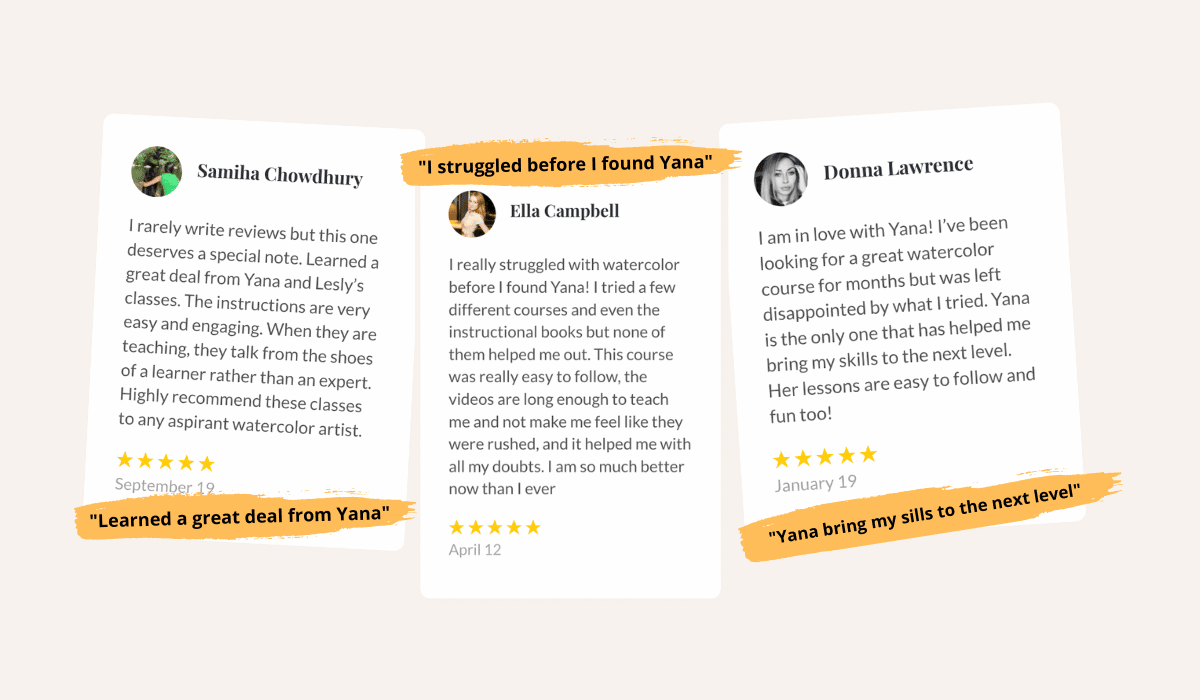Inspiring, isn’t it, when your brush effortlessly dances on the paper, the watercolors blooming and blending into something aesthetically pleasing? A key player in this artistic concert, which often doesn’t bathe in the limelight it deserves, is the humble watercolor paper. Whenever we discuss watercolor painting, we often emphasize the quality of paints and brushes used. However, the kind of paper you choose can significantly shape your artwork as well.
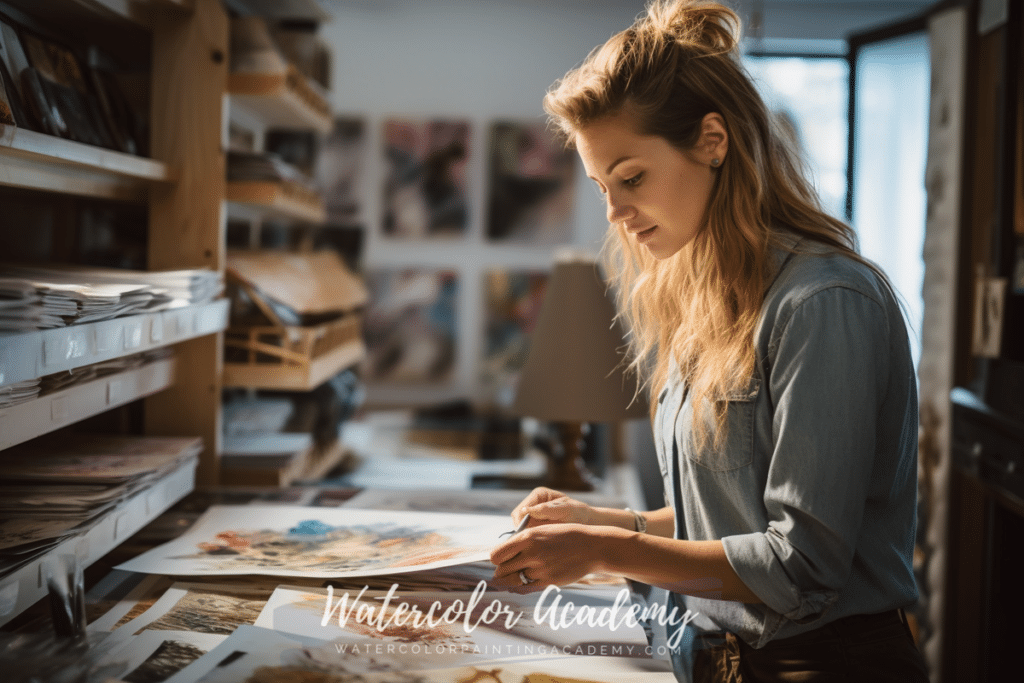
The right watercolor paper can turn a painting experience from frustrating to liberating. It holds the power to bring your imaginative views to life, being the difference between the colors bleeding uncontrollably or creating enchanting soft edges. It stands as the canvas that supports your artistic expression and can subtly yet profoundly affect the final look of your masterpieces.
The variety of watercolor papers available might seem daunting, but fear not; by understanding their characteristics and your painting aspirations, you can find the ideal match. In this article, we will delve into helping you make the most informed and suitable paper choice for your next watercolor endeavor.
Paper Basics
In truth, the paper you pick isn’t just about personal preference. It’s also about the impact you want to achieve with your artwork.
Consider this: do you hope for your colors to blend seamlessly with a soft gradient?
A paper with inherent wet strength would stand as your ideal choice. Are you rooting for bright, vibrant colors that pop off the page?
A paper with good reflectivity should be in your artist’s toolkit. Each paper attribute, from weight and texture to its manufacturing composition, can dramatically influence these outcomes.
Moreover, the paper also decides the resilience and longevity of your artwork. Higher quality paper can stand against time even as years roll by, preserving your art in its full original vigor. Choosing wisely means your art will not only look its best but will also remain in prime condition for future generations to admire your creativity.
In essence, the right paper doesn’t restrict your abilities but opens a road to achieving the complete potential of your watercolor paints.
We’ve all been there, haven’t we—overwhelmed by the vast range of art supplies available—a challenge finding the right ones for our project. But if there’s one choice you want to give extra attention to while painting with watercolors, it’s the paper. It’s not just a surface to hold your paint; it’s an active participant in your creative process.
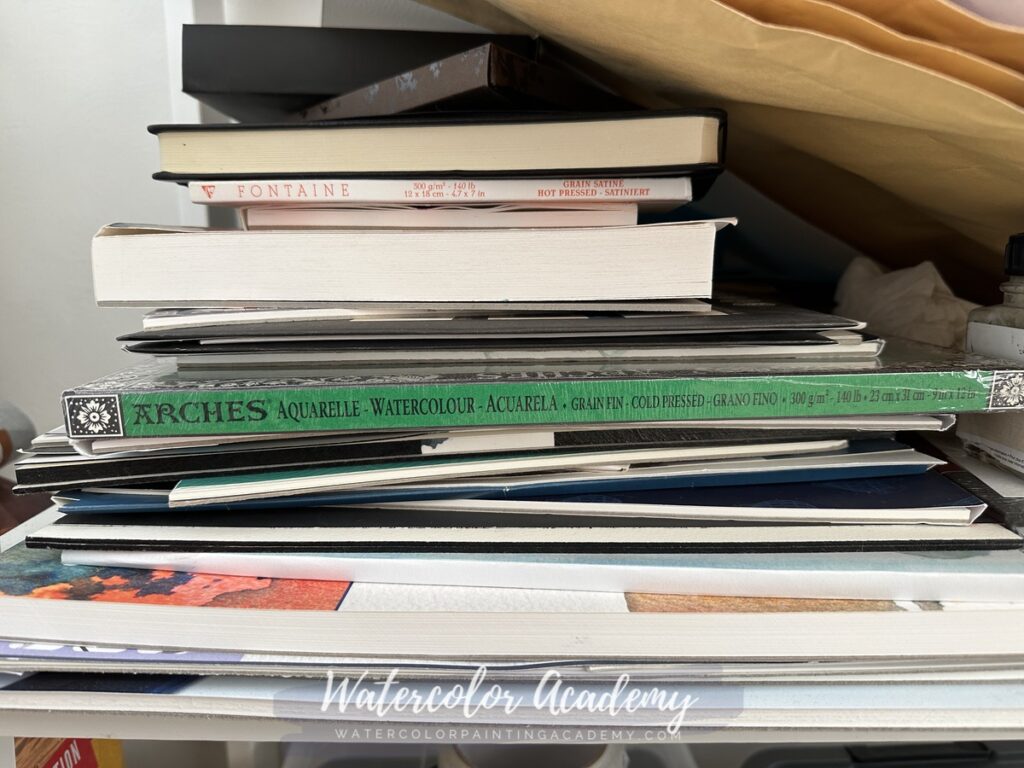
The unique characteristic of watercolor—the lucid fluidity, the ability to create ethereal light effects, and the radiant transitions, all relies heavily on the nature of the paper used. Unlike oils or acrylics, watercolors are lean and absorb into the paper, making the type of paper you use a vital part of the final aesthetic.
Watercolor paper interacts with your paint in ways that can either enhance or hinder your intentions. It determines the spread of your paint, how well the paper can handle water, and the balance of color absorption and reflection. In short, the art of mastering watercolor lies as much in grasping your paints and brushes as in understanding your paper.
Understanding Paper Weight
As we delve deeper into the ocean of watercolor papers, we discover that there are primarily three broad categories that dominate this space: hot-pressed, cold-pressed, and rough.
Sounds like something out of a coffee shop menu, doesn’t it? But, surprise, these names articulate the texture of the watercolor paper! Hot-pressed paper, often abbreviated as HP, is the smoothest of the trio. This paper goes through heated cylinders that give it a sleek finish. Cold-pressed or NOT (not hot) – a bit of paradox, but it stays with me – resides in the middle spectrum: not too smooth, not too rough, just the perfect harmony. The rough paper, being the Wild West of textures, has the untouched, natural surface of a freshly made sheet.
Each type of paper offers a unique touch to your watercolor journey. Hot-pressed paper lets your paints glide smoothly on the surface, which is ideal for high details and vibrant washes. Cold-pressed, the most popular choice, provides a light texture, perfect for a cloudy sky or a landscape with a pleasant amount of detail. If you’re hoping to create art with expressive and rich textures, the rough paper would be your faithful companion.
If you feel a tad confused at this point, worry not. The best part about art is that rules are meant to be broken; something that doesn’t sit right could turn into your style! So keep an open mind and prepare for some fun experimentation!
With a basic understanding of paper types out of the way, we can now progress to another essential aspect: namely, the weight of watercolor paper.
Now, ‘weight’ is a term that’s thrown around a lot in the art world, but what does it really mean within the context of watercolor paper? No, it’s not about hauling a massive stack of paper around the studio. Phew, right?
Paper weight, expressed in terms of grams per square meter (gsm) or pounds per ream (lb), directly relates to the thickness and sturdiness of the paper. The heavier the weight, the thicker the paper. Lighter papers, like 90 lb or 190 gsm, are thin and might wrinkle or tear when exposed to large amounts of water. Moving up the scale, you have medium-weight papers around 140 lb or 300 gsm, which can handle a reasonable amount of water without distortion. Especially if you stretch them beforehand – but that’s a topic for another day. As for heavier papers like 300 lb or 640 gsm, they’re incredibly stable and can endure loads of water and scrubbing. These bad boys are a dream for those adventurous spirits who love to experiment without the fear of the paper buckling.
Deciding the appropriate paper weight for your project largely depends on your technique and what you want to achieve. Light washes and quick sketches? Light paper will suffice. Elaborate art with heavy washes or lots of lifting? You’d want to go for heavier papers. In essence, understanding paper weight is all about knowing your artistic direction and picking the best ally for your creative journey. Be prepared to hold art in your hands that feels robust and presents your colors in the most brilliant ways. Who knew ‘weight’ could carry so much importance in the realm of watercolor, huh?
Understanding Paper Texture
Alright, let’s discuss how to match paper weight to your creative ambitions. If you are just starting your watercolor journey or if your project involves light washes or quick sketches, a lighter weight of around 90 lb (190 gsm) could be quite sufficient. These papers are also budget-friendly, making them a great choice for practice sessions.
Moving on to mid-range weights like 140 lb (300 gsm), these are just perfect for more detailed works that involve moderate to heavy washes, lifting, scrubbing, or other techniques. The balanced sturdiness prevents the paper from warping or buckling under water’s weight without skipping on the ease of use. It’s no wonder that this paper weight is a favorite amongst many artists, beginners, and pros alike.
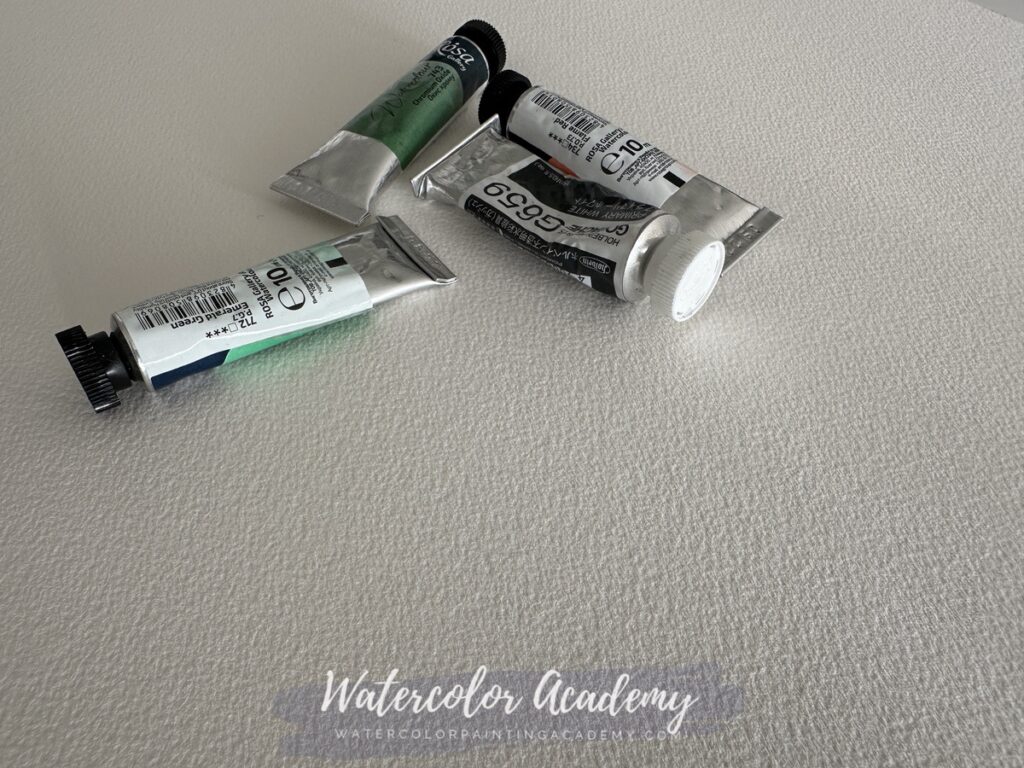
When embarking on elaborate, larger-sized projects or planning to use heavy washes or correction techniques, you might want to opt for heavyweight papers—300 lb (640 gsm) or more. These papers show almost no signs of buckling, however much water you throw at them. You’re free to focus on capturing the depths and dynamics of your vision without the worry of spoiling your work.
In conclusion, the ideal paper weight isn’t a one-size-fits-all solution. It varies from artist to artist, technique to technique, and even project to project. Always remember that your paper is a tool in your palette, something that can help your artwork meet its ultimate potential. Here’s to paint-friendly, making-no-compromise-on-quality artworks presenting themselves in their full glory!
As you get more familiar with watercolor painting, you’ll start to realize that the texture of your paper has a significant impact on the final appearance of your artwork. It can enhance certain techniques, provide interesting visual effects, and truly bring your art to life.
Hot press, cold press, and rough are the three most common textures you’ll encounter in your artistic endeavors with watercolor paper.
- Hot Pressed (HP) – As smooth as a baby’s cheek, hot pressed paper has a fine-grained texture, which allows for sharp details and evenly spread washes. It’s the go-to choice for artists who love working on intricate details, precise lines, and large washes.
- Cold Pressed (CP) or Not (Not Hot-Pressed) – The Goldilocks of textures – not too rough, not too smooth, but just right. This medium texture is somewhat rough yet not heavily so, making it versatile and suited to a variety of painting styles. You have enough surface texture to capture the color or pigment pools, creating accidental effects that are often artistic surprises, yet it’s sleek enough to allow for detailed work.
- Rough – The most textured of the three, rough paper can add lots of visual interest to your artwork. It’s perfect for loose, expressive styles or when trying to capture the unrefined beauty of nature. The undulating surface encourages watercolor pigments to settle in the grooves, creating captivating light and dark effects.
Your choice of texture should be driven by your subject matter, style, and personal preference. Experiment with each kind to discover which texture brings out the best in your artwork. Remember, there’s no such thing as a ‘wrong choice’ when it comes to selecting your paper texture. It’s all about the effects that you can create and what aligns best with your creative vision.
Understanding Paper Quality: Student vs. Artist Grade
‘Texture’ is a seemingly small choice, but believe me, it plays quite a significant role in matching your painting style or the subject of your artwork.
If you’re fond of detailed paintings such as botanical illustrations, urban sketches, portraits, or just anything that requires precise, controlled strokes, hot-pressed paper can be your best bet. Thanks to its smooth surface, your paint will flow easily, enabling you to achieve the crisp edges and surface detail that these subjects often require.
For those of us who enjoy painting landscapes, seascapes, or just anything that needs a feel of randomness or spontaneity, the cold-pressed texture is a paradise! Its moderately rough surface enables the paint to accumulate in pockets, creating beautiful variations in washes that can mimic the randomness of nature pretty nicely. Plus, it’s flexible enough to handle some detailing, too!
When your painting style leans more towards expressive, bold art forms, or when you strive to capture raw, bold textures such as tree bark, rocks, or rugged mountains, go for the rough texture. Its pronounced, coarse surface texture will naturally create those lovely, granulating effects, adding a whole new dimension to your artwork.
Of course, these are just guidelines, not rules set in stone. An important part of your art journey is experimentation and finding your unique style. You might find your personal preference leaning towards a particular texture no matter what subject you paint. And that’s perfectly OK! The goal is to find what works best for you and addresses your artistic needs.
Remember, watercolor is not just about coloring within the lines and rules. It’s a chaos of color and water finding its equilibrium on a sheet of paper. In this exploration, the texture of your watercolor paper will be a delightful companion. So grab your brushes, choose your texture, and discover the magic it weaves into your watercolor story!
So you might be thinking, “I’ve got this paper selection all figured out,” but there’s another layer to explore: the quality of the paper. It’s just about pleasing the eye, right? I’m afraid not. It might surprise you, but the quality of the paper substantially impacts your painting experience and even the life of your artwork.
Watercolor paper is typically categorized into two realms: student grade and artist grade. So, let’s dive in and see what distinguishes these two.
- Student Grade: Also sometimes referred to as practice or sketching paper, student-grade papers are the budget-friendly pick. They’re perfectly suited to beginners honing their skills, experimentation, or quick sketches. However, it’s essential to remember that these papers typically have a lower cotton content, with some being cellulose (wood pulp) based. This leads to less absorbency, and colors may appear a tad duller compared to their more costly counterpart. But hey, it’s a splendid choice when you’re testing new techniques or making preliminary studies without the worry of wasting expensive paper!
- Artist Grade: Stepping up the ladder, we encounter artist-grade or professional-grade paper. These papers are made predominantly or entirely from cotton, a quality that greatly enhances absorbency and durability. Your colors will appear vibrant, and the paper will endure lots of water and rough treatment. If you’re planning a finished piece of work, using heavy washes, or showcasing your mastery of watercolor techniques, artist-grade paper should be your choice.
The divide between student and artist grades primarily comes down to the performance, durability, and, of course, the cost. It’s all about choosing the right tool for the purpose at hand and, ultimately, making an informed decision that enhances your artwork and the joy of painting. Whether you are a beginner starting with your first brush strokes or an experienced artist prepping for a gallery, there’s a paper out there waiting to transform into your masterpiece!
Understanding Paper Format
Choosing between student-grade and artist-grade paper might seem intimidating. But don’t worry; let’s break it down to make it easier based on your purpose and goals.
Student Grade: If you’re a beginner, still getting to grips with the basics of watercolor painting, or if you’re a skilled artist brainstorming ideas or doing practice works, student-grade paper can be an economical and practical choice. They offer you the freedom to experiment, make mistakes, learn, and grow without the worry of wasting expensive paper. You can freely splash paint, test color mixes, try out new techniques, and push your boundaries. They’re your best bet for mass practice or rough works where the need for longevity and high performance doesn’t exist.
Artist Grade: When you’ve moved beyond the learning and practicing phase and are ready to create finished artwork, investing in artist-grade paper is totally worth it. Whether you’re preparing for a gallery, a commission, a gift, or even just to satisfy your inner perfectionist, artist-grade paper will significantly enhance the aesthetics and durability of your work. The high cotton content will do wonders for your washes, blending, and other techniques you’ve mastered. Your colors will appear more vibrant, and your paper can endure a lot.
Remember, the choice between student and artist-grade paper is not a matter of skill level but a question of what best serves your current needs and intentions. Both types have their own advantages and are suited to different stages of the artistic process. So, don’t shy away from using both types in your art practice. After all, the path to creating great art includes a mix of practice, failures, and successes!
Just when you believed you’d wrapped your mind around watercolor paper, here’s another facet to consider – the format of your paper! You may have noticed that watercolor paper comes in a variety of formats that include sheets, pads, rolls, and blocks. It’s not a mere packaging variation; rather, each format has its unique characteristics that can influence your painting process.
- Sheets: Usually available in large sizes – think as big as 22×30 inches – sheets offer a lot of flexibility. You can use them whole for large, expansive projects, or you can cut them down to suit smaller, more detailed work. They are typically sold individually or in packs, and they give artists the freedom to customize their paper size for each project.
- Pads: A pad typically consists of a number of sheets bound together. They’re highly portable, making them an excellent choice for artists on the go or those who like to paint in plein air. Pads can be found in a variety of sizes, often smaller than standalone sheets, and are great for casual, everyday painting or practice.
- Rolls: Have you ever felt restricted by the dimensions of standard-size watercolor paper? Rolls to the rescue! A roll of watercolor paper is for those ambitious, large-scale projects. Rolls provide the freedom to cut paper to any size or shape you desire, offering virtually limitless possibilities for your creativity.
- Blocks: A block is a stack of paper sheets bound on all edges, helping prevent paper warping while you paint. Once your painting is dry, you can separate the top sheet from the block using a palette knife or a similar tool. Blocks are a fantastic convenience for artists who paint frequently and don’t want to bother with stretching their paper.
Your choice of format can depend on various factors, such as the size and scale of your project, your working location, and how much time you want to allocate to paper preparation. Think about what best suits your working style and the needs of your project, and there you have it: your perfect partner in crime! Be open to trying different formats; you never know where you might find your comfort zone. Here’s to making the world your canvas, one format at a time!
It might seem like an overwhelming decision with so many format options, but selecting the right format really comes down to understanding your needs for a particular project.
If your project involves large, bold works or even panoramic views, you might want to consider sheets or rolls. They give you a lot of room to play around with and are perfect for those big ideas that can’t be contained within standard sizes. A picture that says ‘go big or go home’ would need these formats for sure!
On the other hand, if you’re fond of creating high-detail, smaller-sized paintings, a pad can be your best bet. With the added benefit of portability, nothing could suit you better for quick outdoor sketches or doodling while you sip a cup of coffee.
Are you thinking of working on a finished painting and dread the paper buckling? A block can be your savior. Just fix the block on your easel, and you’re ready to start painting straight away. Upon completion, use a palette knife to remove your painting. It’s as simple as that! A block can be especially beneficial for plein air painters or those artists who prefer to jump straight into painting without the process of stretching the paper.
In the end, the choice of format is a very personal decision. It should align not just with your project’s needs but also with your working style. Don’t hesitate to try a different format every now and then. Who knows, you might stumble upon a newfound preference that may entirely revolutionize your artistic approach! Embrace the varieties of formats as multiple roads leading you to your perfect artwork, each offering a unique journey!
Watercolor Paper Brands
Now that we have explored watercolor paper’s ins and outs, from its texture, weight, and quality to formats, let’s sail into the sea of brands. Just like every other field, some brands stand out in the watercolor paper universe. They have gained the trust and love of artists over the years due to the consistent quality and performance they offer.
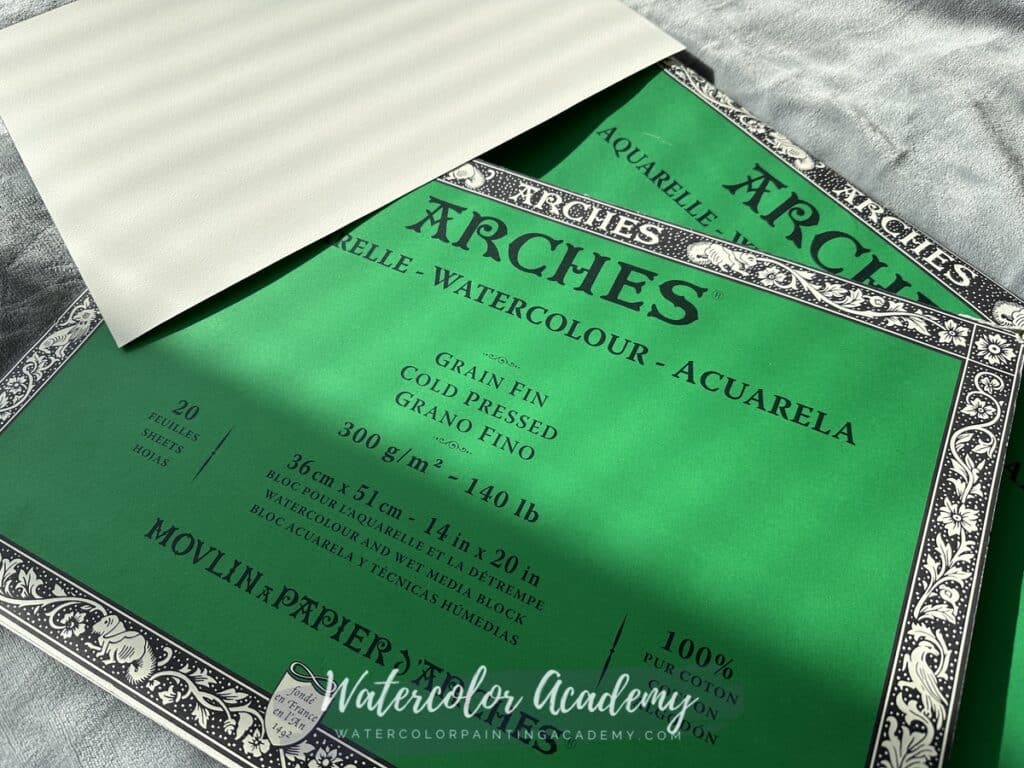
- Arches: When we talk about premium, artist-grade papers, Arches is often the first brand that springs to mind. Manufactured in France, Arches watercolor papers are made from 100% cotton and are a favorite among professionals. They stand up well to heavy washes, lifting, and scrubbing. If you’re seeking a tried and true artist favorite, Arches is definitely worth considering.
- Fabriano: With centuries of papermaking experience under their belt, Fabriano produces both artist and student-grade papers. Known for their durable, robust surface and high-quality ingredients, Fabriano papers are versatile and reliable.
- Strathmore: Strathmore covers a huge range in terms of quality and price. From beginner-friendly student-grade options to their higher-end 500 series, Strathmore has options for every stage of your artistic journey.
- Winsor & Newton: Known more for their paints, Winsor & Newton also offer a great range of watercolor papers. Their papers have a strong reputation for reliability and consistent quality.
- Canson: Offering a wide range in terms of price and quality, Canson provides everything from inexpensive practice paper to high-quality, professional-grade options. Canson’s papers stand out for their affordability and performance.
Every artist has their own preference when it comes to brands. Just like your paints and brushes, the brand of your paper can significantly impact your artwork’s final look. What works for one artist may not work for another. Remember, the best paper is one that complements your style, technique, and creative goals. So, go ahead, test these brands out, and let your brushes decide! Happy painting!
Hands-on Experimentation
We’ve walked an informative path through the terrain of watercolor papers, discussing everything from quality, weight, texture, and format to brands. But let’s not forget watercolor painting isn’t just a science with formulas to follow. It’s an art form bursting with its own nuances and personal preferences. The one aspect that truly stands out in this journey of understanding watercolor paper is experimentation.
Sure, a certain weight or texture might be suggested for a specific style or technique. However, the best part about art is breaking the boundaries and discovering something unexpected. Why not try out a landscape painting on smooth, hot-pressed paper? Or see how detailed portraits turn out on a rough textured paper? Pushing the envelope like this often results in pleasant surprises and could lead to your unique signature style.
Don’t hold yourself back from experimenting with different kinds of paper. Try your hand at a few different brands, each with varied qualities, weights, and textures. Experimentation will serve you better than any guide can. After all, understanding your tools, their possibilities, and their limitations is a huge part of mastering any art form!
Remember, the joy of creating art isn’t just about the final masterpiece. It’s in the process of understanding and exploring your medium. So, let’s dive in, get our hands a bit dirty, and relish the joy ride of trying different watercolor papers! Let’s embrace the opportunity to learn and grow, one brushstroke at a time.
In my own artistic journey, experimenting with different types of watercolor paper has been an intriguing process – sort of like getting to know a close friend, understanding their strengths, and working with their quirks. I recall one particular project when I decided to step out of my usual comfort zone of cold-pressed paper and venture to exploit the smooth surface of a hot-pressed sheet.
The project was an intricate botanical illustration, usually a perfect pair for the sleek, hot-pressed paper. However, I encountered a surprising twist in the tale. On applying wet-on-wet wash for the background, I noticed that the colors didn’t flow and blend as they usually did on my reliable cold-pressed paper. For a moment, I was taken aback and considered switching back to what I knew best. But then, the charm of experimentation took over!
I tweaked my usual approach and tried a different technique for blending the colors. Instead of working on very wet paper, I worked on damp paper, allowing the colors to blend without flowing too much. The outcome was pleasingly different and presented a new dimension to my painting style!
The lesson to take away from this experience is that each paper type invites a unique interaction with watercolor paints. They beckon different painting techniques, bringing out varied effects, some even unexpectedly beautiful from the usual. From the rebellious hot-pressed sheets that challenge your colors to flow, the versatile cold-pressed ones that are always ready for a playful splash, to the rough texture that adds depth to your strokes unknowingly, each type harbors a journey in itself.
So, embrace the surprises, cherish the learning, and don’t stop exploring. Because, you know, the thrill is in the journey, not the destination. Now, let’s continue on this exciting journey into the adventurous world of watercolor papers! Here’s to creating some memorable artwork on our way!
Conclusion
As we reach the end of this exploration journey into the appealing world of watercolor papers, let’s take a moment to appreciate the newfound understanding we have gained of this valuable artist tool. We’ve navigated through the impact of paper quality, the subtleties of weight, the diverse range of textures, the practicality of varied formats, and the reliable brands in the market. Our journey has highlighted that watercolor paper is much more than a mere surface for painting; it’s a pivotal participant in shaping your artwork.
Our exploration, however, doesn’t end here. Every artist’s journey is personal and unique, and the same applies to their relationship with their tools and materials. What works for one artist might be markedly different from what works for another. The compatibilities and preferences are subjective; they change over time and are shaped by countless other factors.
As you advance in your artistic journey, I encourage you to approach the subject with an open mind. Experiment with different types of paper and try different textures, grades, weights, and formats. Exhaust the vast range of possibilities that these different kinds of paper offer, and enjoy each experience.
Remember, each bit of trial and exploration that you undergo is a step forward in your artistic growth. So don’t hesitate to mix things up every now and then and venture into the unknown territories of textures or weights. The true joy of art lies in these very experiments that give you new perspectives and push your creative boundaries.
Let your artistry shine through, let your choices reflect in your masterpieces, and let your sheets of watercolor paper be more than just a canvas to you. As we wrap, I invite you, all my fellow artists, to dive right in, hands full of brushes, into this profound arena of watercolor papers. Happy experimenting, and here’s to creating some wonderful art!


